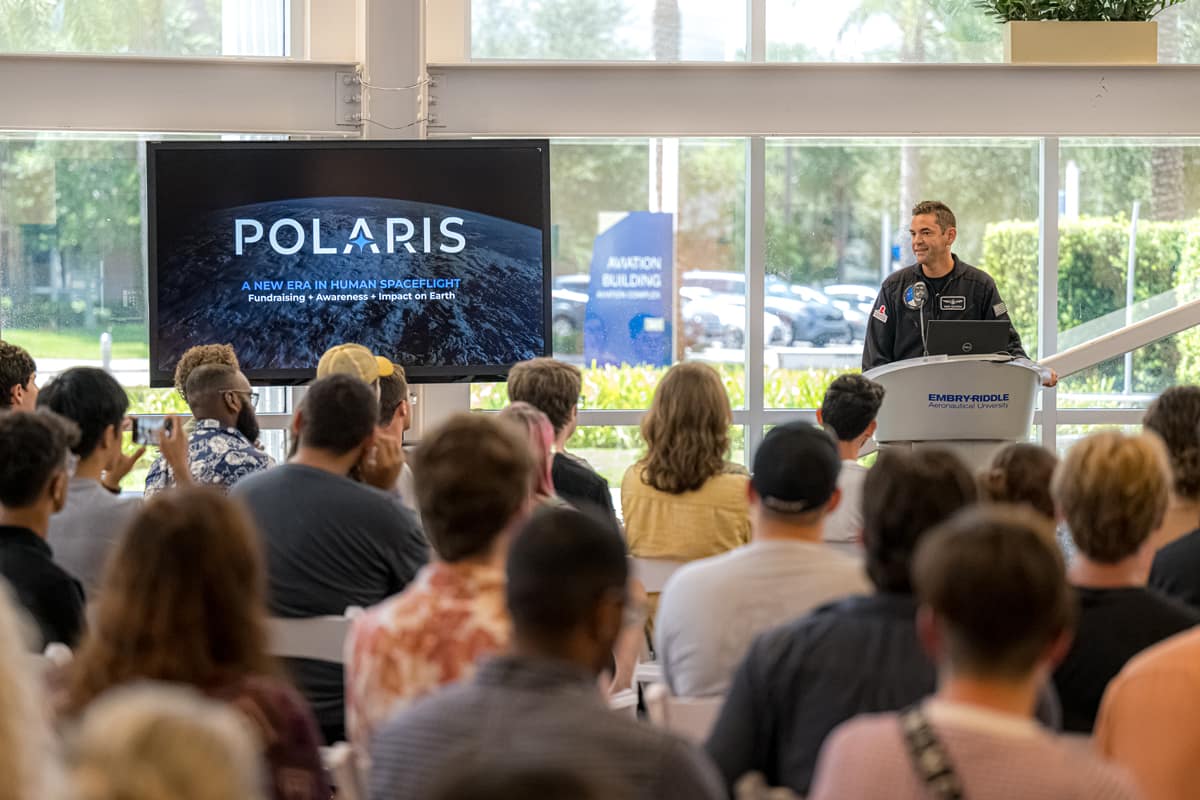Embry-Riddle Alum and Astronaut Jared Isaacman Nominated to Lead NASA

Embry-Riddle Aeronautical University alumnus Jared Isaacman — who recently commanded the Polaris Dawn mission where he completed the first-ever civilian spacewalk — has been nominated by President-elect Donald Trump to be the head of NASA.
“Jared’s passion for Space, astronaut experience, and dedication to pushing the boundaries of exploration, unlocking the mysteries of the universe, and advancing the new Space economy, make him ideally suited to lead NASA into a bold new Era,” Trump wrote in a statement he posted on social media.
If confirmed by the Senate, Isaacman would become the next NASA administrator.
Embry-Riddle Board of Trustees Chairman Mori Hosseini extended his sincere congratulations to Isaacman on his well-earned nomination by President-elect Trump.
“Jared's unparalleled passion for aviation, his multiple space missions, and his unwavering dedication to pushing the boundaries of exploration make him the perfect candidate to lead NASA into an exciting new era,” he said.
Isaacman (’11) has repeatedly visited Embry-Riddle to speak with students, and he is slated to deliver the keynote address at Embry-Riddle’s Daytona Beach Campus undergraduate commencement ceremony next week on Thursday, Dec. 12. He will also be conferred a Doctor of Humane Letters during the event.
“Embry-Riddle is extraordinarily proud to call Jared an alumnus,” said Embry-Riddle President P. Barry Butler, Ph.D. “His accomplishments and vision for space exploration are without parallel and his dedication to humankind inspires us all.”
Isaacman has been at the forefront of private space exploration, achieving several groundbreaking firsts.
In 2021, Isaacman and his crew on the Inspiration4 mission became the first to orbit the Earth without an astronaut connected to a governmental space agency onboard.
During the Polaris Dawn mission, he and his crew reached a peak altitude of 870 miles, a record for a crewed orbit and the farthest astronauts have traveled since NASA’s Apollo moon mission. The historic mission also saw Isaacman and Sarah Gillis, a SpaceX engineer, step out of the SpaceX Dragon capsule, making them the first astronauts without ties to a space agency to conduct a spacewalk.
Isaacman financed the Inspiration4 mission, which also raised money for St. Jude Children’s Research Hospital, and collaborated with SpaceX on the Polaris Dawn mission.
With the Polaris Dawn mission, Isaacman presented unique opportunities for Embry-Riddle students and faculty to conduct innovative space research. The Dragon capsule carried the student-built LLAMAS multi-camera system, developed under the direction of Dr. Troy Henderson, director of the Space Technologies Lab and associate professor of Aerospace Engineering.
Isaacman and the crew came to the Daytona Beach Campus to test the camera and collaborated closely with students on the project.
“Especially [as a result of] my connection back to Embry‑Riddle, having gotten to work on a project that would ultimately fly on our vehicle; get exposed to the vacuum of space; bring back data — it gets exciting. So, I was thrilled for it,” he said in an interview last month.
